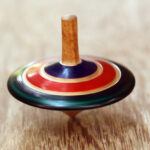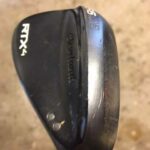“I wish my wedges would spin a bit less” said no golfer ever! The shot from the golfer on TV that hits the green, jumps forward a couple of feet then sucks back five yards or more also elicits a round of applause and admiring gasps from the crowd and thoughts of ‘I wish I….’ from those of us watching on TV. Of course, getting this level of backspin has many causes from angle of attack to basic club head speed. One thing that can make a difference is the equipment in your hand and learning how to regroove wedges is a quick fix to give yourself the best chance of getting more spin without hitting it like a pro.
Of course, the effect of grooves isn’t miraculous. If you are flipping at the ball or hitting your wedges head height, the ball isn’t going to be backing up on the green any time soon. However, working on a better swing, especially with your wedges, isn’t what this article is all about. If you want to work on your swing, there is plenty of help here.
Do New Wedges Spin More?
There is a reason why tour players change their wedges so often. When you are playing for your livelihood, you don’t want to give up an advantage to the rest of the field. This means that getting new wedges off the tour van at the very least a few times a season makes perfect sense. For most of us, this isn’t an option. Even changing wedges every season makes golf very expensive, very quickly.
Tests show that brand new wedges will make a difference over ones with grooves that have become dull over time. It is certainly debatable whether this is measurable for the average hacker, but given that improving the grooves even on an old wedge is such an easy fix, why not do it?
Of course, grooves that are sharp and clean aren’t just about the spin and when pros change their wedges, it is for other reasons too. These grooves are also important for evacuating anything that finds its way between the face of the club and the ball. For example, if you are hitting out of a slightly juicy wet lie, the grooves should, in theory, reduce the amount of water between the ball and the face of the club. For pros, this level of control is vital and it is probably worth having for the rest of us too, especially given that some of us spend a fair amount of time in the rough!
Can the Manufacturer Repair Worn Grooves?
So if we are saying that we want to get these grooves in as good condition as possible, how do we go about it? There is always the possibility of sending your clubs to the manufacturer and getting them to do it for you. I know that ping does this and I am sure that many others do to. In all honesty, I have never really seen the point. I would imagine the cost and the hassle makes less worthwhile than simply buying new wedges!
One situation where I would consider this is with classic clubs. For example, I do like some of the classic Ping irons, especially the Eye 2. Ping clubs tend to be virtually indestructible in my experience and so I would happily send a vintage set of Eye 2 irons to Ping in order to get them completely restored to their original state including new grooves.
Another reason to do this might be because the set comes from something that has non-conforming grooves. However, this is more complicated than you might think. Non-conforming grooves (as certain generations of the Eye 2 have) aren’t just about the size of the grooves themselves but also about the spacing between the grooves. I can’t see how the manufacturer could do a whole lot about this. I have heard rumours that some PGA pros have stocks of the original eye 2 wedges which Ping has made with conforming grooves simply because they love the sole design (as I do) but have no idea if this is really true or not.
Repairing Grooves at Home
Anyway, there is no reason to send your clubs off to get this professionally done when it is easy enough to do yourself. You can get a specialty tool to do this but there is also a DIY solution. Personally, I have got wedges that were a good few years old in great shape by doing this.
The first thing I do is to clean the club in soapy water. I use a cloth and then a wire brush to get any dirt out of them. I feel like the wire brush also makes the face ‘grippier’ but I don’t know if this is just wishful thinking on my part!
Then next thing is to take a small flat headed screwdriver. It needs to be very small so that it fits as closely as possible in the grooves themselves. I then simply run the head of the screw driver through the grooves. I am usually surprised at just how much gunk comes out, even after washing. I then finish off with another rinse in soapy water, and a rinse and dry.
I used to clean the club head more thoroughly by soaking it overnight in coca cola, but I only do this now if I want to restore the club. If I am just interested in spin, I tend to leave a bit of rust on the face because it helps with performance.
The last step in what you do on the course. One of the best things you can get to hang on your bag is a groove cleaner. This is like a small wire brush which clean out the groove before a shot and also stops the grooves from getting full over rubbish over time.
There you go. A wire brush and a small screwdriver and you could be sucking that ball back off the green like Hil Mickelson in no time at all!




